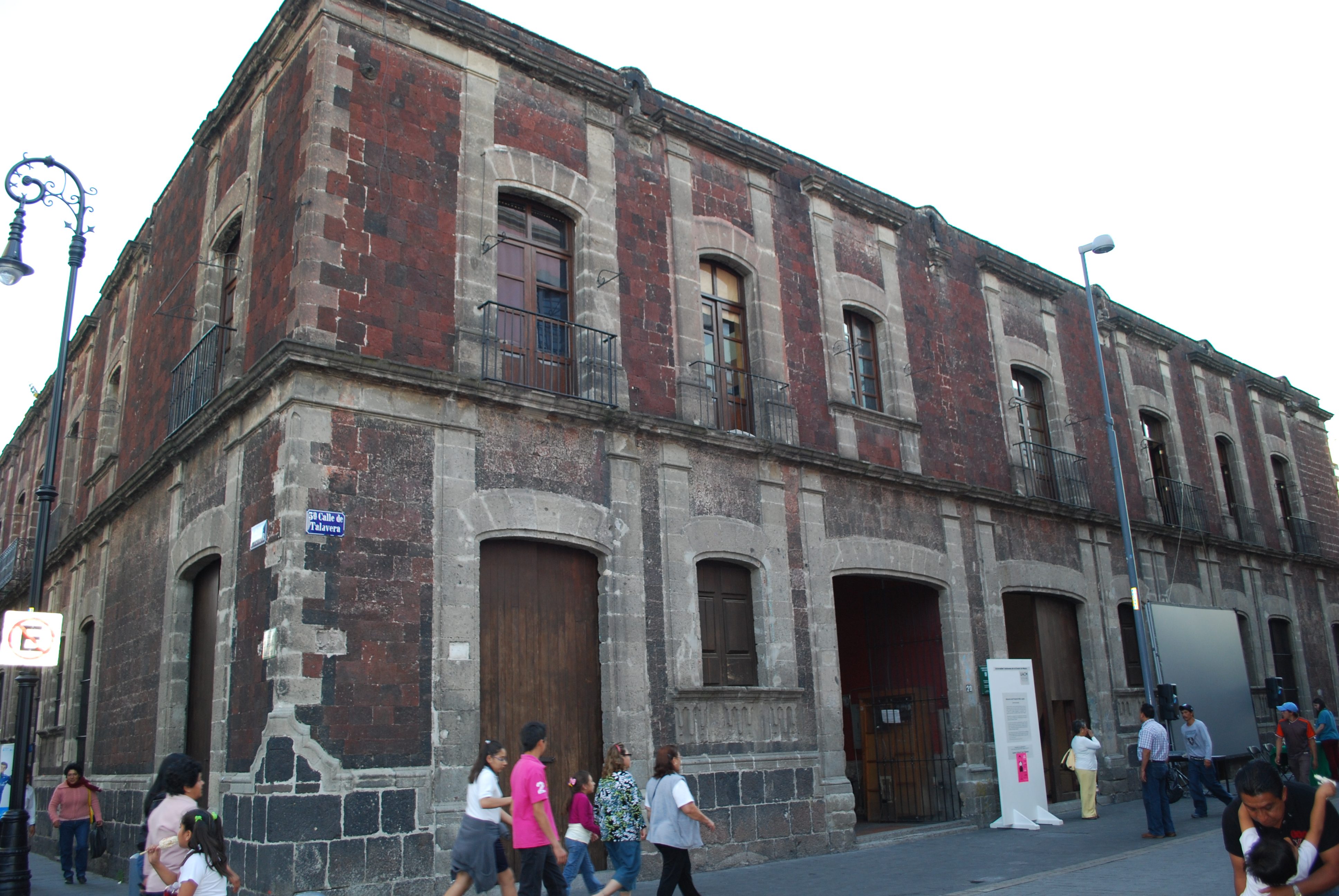Casa Talavera Cultural Center on:
[Wikipedia]
[Google]
[Amazon]
 Casa Talavera Cultural Center is located in the La Merced neighborhood of the
Casa Talavera Cultural Center is located in the La Merced neighborhood of the
historic center of Mexico City
The historic center of Mexico City ( es, Centro Histórico de la Ciudad de México), also known as the Centro or Centro Histórico, is the central neighborhood in Mexico City, Mexico, focused on Zócalo or main plaza and extending in all direction ...
. The building dates back to either the 16th or early 17th century and was the home of the Marquis de Aguayo. In 1931, it was declared a national monument and in 2002, the space was converted to its present use, administered by the Universidad Autónoma de la Ciudad de México
Universidad (Spanish for "university") may refer to:
Places
* Universidad, San Juan, Puerto Rico
* Universidad (Madrid)
Football clubs
* Universidad SC, a Guatemalan football club that represents the Universidad de San Carlos de Guatemala
...
.
The building
The building is located on the corner of Calle Talavera and República del Salvador in the La Merced neighborhood of the historic center of Mexico City. The building has mostly conserved its Mexican Baroque style, including the old murals in the former living quarters upstairs. The lower level was dedicated to business and other work. Excavations in the building unearthed an old kiln, mill and well. The production of Talavera-type ceramics in the building is the source of its current name. The downstairs also has an annex which served at a site museum for both the building and the neighborhood.The cultural center
The building is currently used as a cultural center, operated by the Universidad Autónoma de la Ciudad de México, and hosts classes, presentation and other activities such as a 2011 exhibit dedicated to the annual re-dressing ofChild Jesus images in Mexico
The ''Niño Dios'' (literally Child God) of Mexico is a tradition of venerating the Child Jesus in Mexico which has taken root from the time it was introduced in the 16th century and then synchronized with pre-Hispanic elements to form some uniq ...
, held in relation to the annual “tianguis
A is an open-air market or bazaar that is traditionally held on certain market days in a town or city neighborhood in Mexico and Central America. This bazaar tradition has its roots well into the pre-Hispanic period and continues in many cases e ...
” market on Calle Talavera which sells all of the supplies related to in preparation for Candlemas (February 2) .
The site museum contains a collection of pre Hispanic and colonial era ceramics and other artifacts found since excavations were begun in 1987 in the neighborhood. It also include a collection of fine ceramics from both Mexico and abroad.
History
The building dates from the early colonial period, somewhere from the 16th century to early 17th century and is built in Mexican Baroque style. It was built over a pre Hispanic construction in what was the Temazcatlitlan neighborhood of Tenochtitlán. Later, it became of on the many houses owned by the Marquís of Aguayo, who helped to consolidate Spanish-held lands in the Americas in the early 18th century as well as to expel the French from Texas . The building used to be located alongside ofLake Texcoco
Lake Texcoco ( es, Lago de Texcoco) was a natural lake within the "Anahuac" or Valley of Mexico. Lake Texcoco is best known as where the Aztecs built the city of Tenochtitlan, which was located on an island within the lake. After the Spanish con ...
, which linked it by water mostly to areas south and east such as Xochimilco
Xochimilco (; nci, Xōchimīlco, ) is a borough (''demarcación territorial'') of Mexico City. The borough is centered on the formerly independent city of Xochimilco, which was established on what was the southern shore of Lake Xochimilco in the ...
and Chalco. As the lake dried, the water link became the La Viga Canal, that served the same purpose. The house has gates to allow canoe traffic to come up to it.
Until the 1920s, the building served as the Gabino Barreda School and in 1931, it was declared a historic monument. From then until 1980, it served as a warehouse and provided space for various businesses, as well as a shelter for the homeless. In 1980, the building was expropriated by the government. In 2002, the current cultural center was inaugurated.
References
{{Coord, 19, 25, 41.74, N, 99, 7, 39.03, W, display=inline,title Arts in Mexico City Cultural centers in Mexico Historic center of Mexico City Museums in Mexico City Spanish Colonial architecture in Mexico